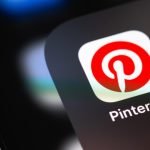Introduction.
Pinterest is much more than a place to find DIY ideas, tasty recipes, and dream home inspiration. It’s become a powerhouse in the marketing world, and if you’re interested in understanding how brands connect with people online, it’s a fascinating platform to explore.
From reshaping how brands show up visually to offering a whole new way to reach potential customers, Pinterest has changed the game in digital marketing in ways you might not expect.
When it first launched in 2010, Pinterest felt like a digital scrapbook—a place where people “pinned” images and ideas they liked. But over the past decade, it’s become a huge marketing tool, particularly for businesses that rely on visuals and inspiration.
With over 400 million monthly active users, Pinterest isn’t just about pinning pretty pictures; it’s about creating a pathway to purchases.
Think about it: 83% of weekly Pinterest users say they use the platform to make buying decisions, and 50% of them have bought a product after seeing a promoted pin (Statista, 2023).
For businesses, this is an incredible opportunity. Pinterest lets brands get right in front of users at that sweet spot when they’re actively planning or shopping for something, which is a unique chance to make a memorable impact.
And for consumers, Pinterest has made it easier to find everything from home decor ideas to fashion, wellness, and so much more, often sparking purchases or new projects along the way.
In this article, I’ll dig into the different ways Pinterest has changed marketing, from transforming how brands use visual content to setting trends, and even shaping how social media advertising works.
I’ll also cover some tips and insights into what makes Pinterest marketing effective, explore the potential for growth on the platform, and even include some common questions that come up about using Pinterest in marketing.
So, let’s dive into how Pinterest became a marketing giant—and if you’re ready to explore how Pinterest could work for your brand, read on to see why so many marketers are getting on board with this visual powerhouse.
How Pinterest Changed the Marketing Industry
Pinterest is unique among social media platforms in its design, purpose, and user experience. Unlike Facebook or Instagram, which are focused on connection and content sharing, Pinterest is essentially a discovery engine, more akin to Google than any other social platform.
This focus on discovery has led Pinterest to become a major platform for marketers looking to reach users who are actively seeking inspiration and ideas.
Here’s a closer look at the main ways Pinterest has shifted the marketing landscape:
1. Creating a Discovery-Driven Approach to Shopping
Pinterest bridges the gap between discovery and shopping better than nearly any other platform. The search-first approach lets users search for items they’re interested in, such as “fall outfit ideas” or “home office decor.”
When users find products they love, they can go directly to the brand’s website from the pin. This has led to an impressive 89% of users reporting that Pinterest has helped them make purchasing decisions (Pinterest Business, 2023).
2. Turning Content into Commerce
Pinterest excels at turning content into actual sales, and this is what makes it especially valuable to marketers.
Since pins are a mix of inspiration and information, users are more likely to discover products in a low-pressure, enjoyable way.
This concept of “content-first commerce” sets Pinterest apart from more transactional platforms like Amazon or even Instagram.
On Pinterest, users often don’t realize they’re being marketed to, which makes them more receptive to the products they see.
3. Targeting an Audience with Intent
People on Pinterest have a unique mindset: they’re often planning a project, gathering ideas, or working on a new look.
This “intent-driven” audience is gold for marketers because it means users are already primed to explore and potentially buy.
This is very different from other social platforms, where users are more passive and are often just scrolling for entertainment.
Pinterest’s marketing tools let brands target users based on their search behavior, making it easier to reach people who are likely to engage and convert.
4. A Platform for Evergreen Content
Pinterest content has a much longer lifespan than posts on other social media. While Instagram and Facebook posts might only be relevant for a few hours or days, a single Pinterest pin can drive traffic for months or even years after it’s posted.
This long lifespan makes Pinterest a valuable tool for brands with limited marketing budgets, as they can invest in creating high-quality pins that will continue to generate traffic and sales over time.
5. Inspiring Trends and Influencing Decisions
Pinterest is often the first place where trends begin to emerge, especially in areas like fashion, home decor, food, and wellness. People go to Pinterest for ideas before many other platforms, which means it has become a trendsetter in its own right. Brands that get their products onto Pinterest early can capitalize on trends before they become mainstream, giving them an edge in the market.
FAQs
1. Why should I consider Pinterest for my brand?
If your brand relies on visual appeal or targets an audience that loves to plan and gather ideas, Pinterest is a natural fit. Its audience is primed to be inspired and to make purchases based on that inspiration.
2. What kinds of brands do best on Pinterest?
Pinterest is ideal for brands in fashion, food, home decor, beauty, travel, and wellness. However, it’s also valuable for any business that wants to reach users during the discovery and planning phase of their journey.
3. Do I need a big budget to market on Pinterest?
Not necessarily. Because pins have such a long lifespan, a few high-quality pins can continue to drive traffic over time. This makes Pinterest a cost-effective platform, especially for small businesses looking to get a good return on investment.
4. How can I measure success on Pinterest?
Pinterest offers detailed analytics for businesses, including data on impressions, clicks, and saves. These metrics can help you understand how users are engaging with your content and allow you to adjust your strategy over time.
5. What are Promoted Pins, and are they worth it?
Promoted Pins are paid advertisements that show up in users’ feeds. They’re valuable because they allow you to target specific audiences based on interests, demographics, and search behavior. If your brand can benefit from reaching new customers who are likely to engage, Promoted Pins could be a great option.
Conclusion
Pinterest has become one of the most impactful platforms for marketing, especially for brands that rely on visual appeal.
By creating a place where people can discover new ideas, plan projects, and make purchasing decisions, Pinterest has carved out a unique space that combines inspiration with intent, making it incredibly effective for businesses of all kinds.
If you’re a marketer, ignoring Pinterest means missing out on reaching an audience that’s ready to be inspired—and ready to buy. The platform’s unique discovery-based approach, long-lasting content, and trend-setting potential are all reasons why Pinterest has changed the marketing landscape.
So, are you ready to see how Pinterest could change the way you approach marketing?





GIPHY App Key not set. Please check settings